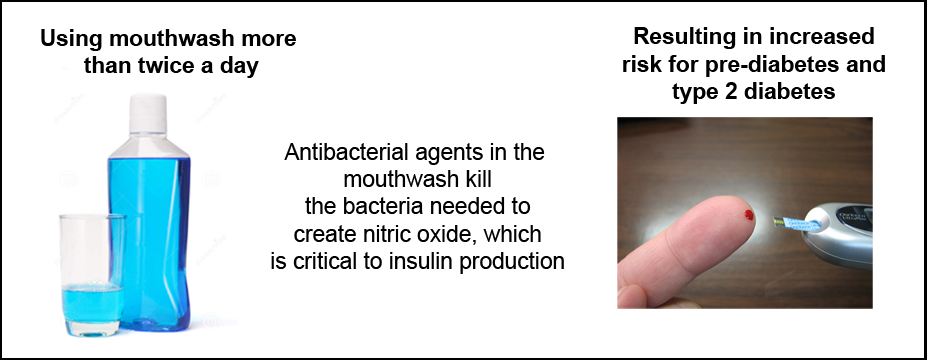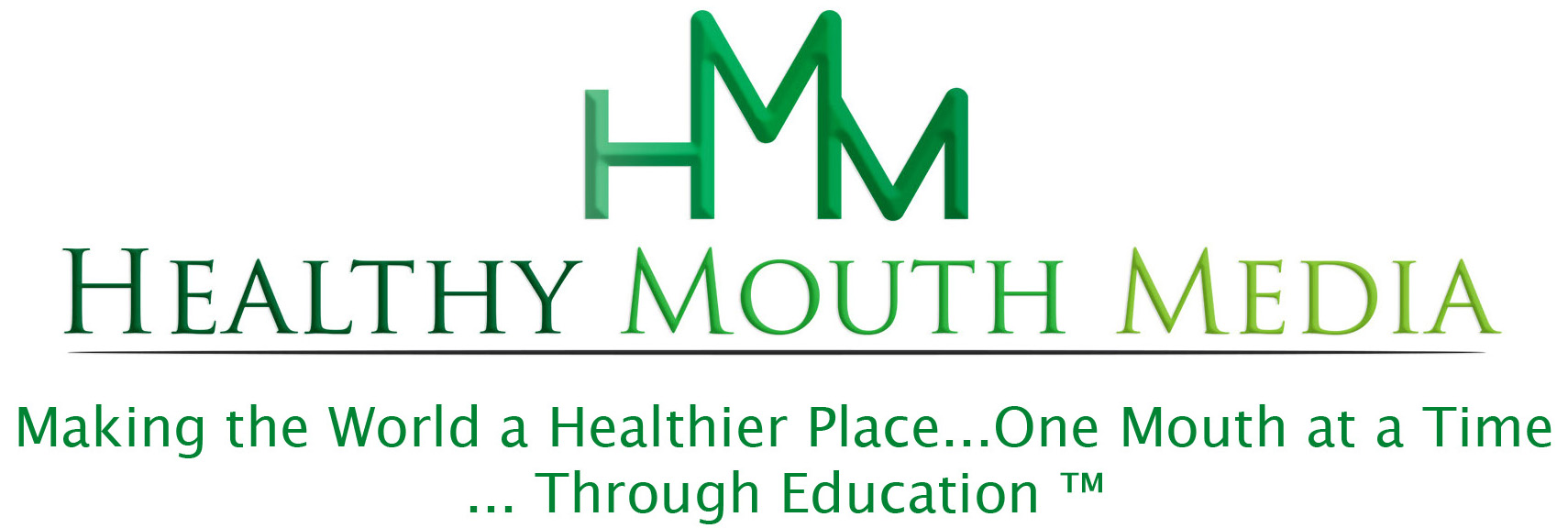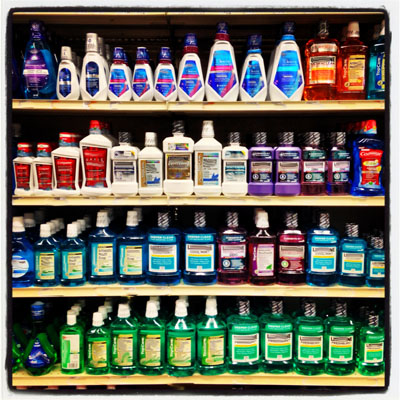Isn’t mouthwash a good thing? Most people think so. Using a mouthwash is part of their daily oral hygiene routine. But if you are middle-aged and overweight, you may want to think twice about daily use of mouthwash.
Recently, in collaboration with several other major teaching centers, Harvard University conducted a 3-year study to determine if there was a link between mouthwash and metabolic disorders because of the anti-bacterial ingredients contained in most over-the-counter mouthwashes.
They studied 1,206 overweight, people aged 45-60, who were free of diabetes and major cardiovascular diseases. At the end of the 3 years, 945 (78%) had completed the study, and were analyzed.
Forty-three percent used mouthwash at least once a day, with 22% using it at least twice a day. Results showed that 205 participants developed pre-diabetes or type 2 diabetes. This number rose slightly to 241 for those using mouthwash once a day. But, for those who used mouthwash two or more times a day, 362 (30% of the group) developed pre-diabetes or diabetes. This association was independent of other risk factors such as smoking, diet, physical activity, alcohol consumption and age.
The study authors concluded, “The indiscriminate routine use of antibacterial mouthwash products may cause more harm than good, in light of recent studies, and further supported by findings of this study.” They added, “Mouthwash use may also have a detrimental impact on diabetes control and possible complications, as these share common […] pathways with blood pressure and diabetes.”

So WHY does an anti-bacterial mouthwash have such a potentially harmful effect – and is this something we ALL should think about?
Most mouthwashes are created to kill all bacteria in the mouth. If you listen to toothpaste and mouthwash commercials, the message you hear is “kill the bacteria that cause cavities and bad breath”. What they DON’T tell you is that this ‘scorched earth’ policy of destroying ALL oral bacteria also kills all the GOOD bacteria.
Yes, there ARE good bacteria and, under ideal conditions of a healthy mouth (and oral microbiome), the “good” bacteria keep the “bad” bacteria in check, naturally reducing or eliminating bad breath and cavities. You have a natural, healthy balance in your mouth, where the “good” bacteria can then ‘do their thing’ – which is helping you maintain good health!
How do they do that? Another point noted in the study discussed above, one critically important way is by producing Nitric Oxide. This is critical to the proper functioning of your body’s enterosalivary (mouth/gut) circuit (the biological nitrogen cycle) and importantly, insulin production. Oral bacteria convert nitrate into nitrite. Stomach acid and gut enzymes react with salivary nitrite, which is then absorbed through the intestines where it becomes Nitric Oxide. So, not only is the microbial balance of your mouth important for Nitric Oxide production, but so is the microbiome balance of your gut.
[Please don’t confuse Nitric Oxide with nitrous oxide – laughing gas – or with an altered chemical version of nitrates and nitrites that are preservatives used in products like wine and deli meats.] See below for an article on a source for all natural, organic wines.
What’s so important about Nitric Oxide? Cardiologists know it best for its role in heart health, because it is a powerful vasodilator (relaxes and opens blood vessels). This helps regulate blood pressure and protect the blood vessels (including the tiny blood vessels in your gums!)
Nitric Oxide also plays an important role in
- brain health
- improving immunity
- decreasing inflammation
- improving sleep, among other things
For you athletes, it can also enhance strength and endurance.
Did you know that ED medications work by increasing your Nitric Oxide levels? Because Nitric Oxide is a vasodilator, it helps increase blood flow.
And, finally, here are some foods that can help boost your Nitric Oxide levels:
Dark chocolate
Walnuts
Spinach
Watermelon
Beets & beet root juice
References
Read the Harvard study abstract HERE
an additional, related study abstract HERE
And if you REALLY want to get into the science, there is a good diagram HERE


Trackbacks/Pingbacks